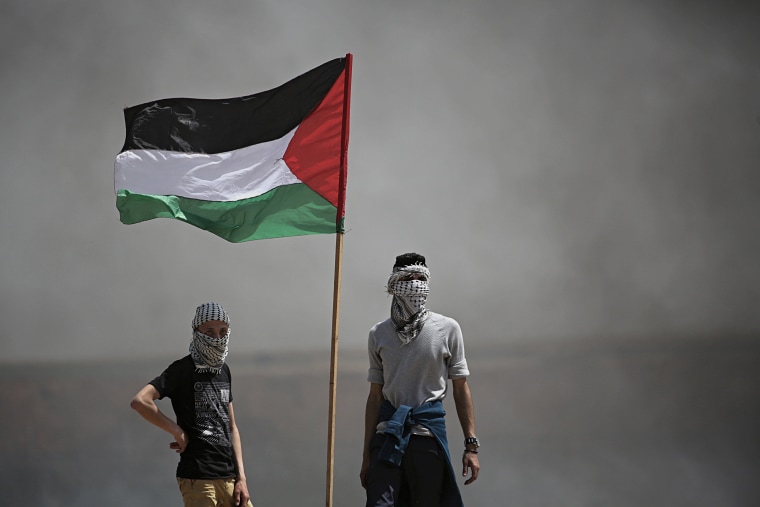TEL AVIV, Israel — Ten Palestinians were killed after Israeli troops opened fire during the latest protests along the Israel-Gaza border on Friday, according to the Palestinian Health Ministry.
Tens of thousands of Gaza residents were demonstrating for the second week in a row for refugees’ right to return to the villages and towns their families lived in before the establishment of the State of Israel — a principle Israel rejects.
Among the dead was a Palestinian photojournalist, Yasser Murtaga, who was hit while holding his camera and wearing a blue flak jacket marked “Press.” Journalists who were with him at the time he was shot said the 30-year-old was over 100 yards from the border. He was hit in an exposed area just below the armpit.
Five other journalists were wounded, according to the Palestinian Journalists Union.
In a statement to NBC News, the Israeli Defense Force said, "The IDF is committed to preventing infiltrations into Israeli territory and threats against IDF troops and Israeli civilians."
"The IDF does not intentionally target journalists," the statement continued. "The circumstances in which journalists were allegedly hit by IDF fire are not familiar to the IDF, and are being looked into."
The IDF estimated that there were 20,000 Palestinians along the border Friday.
The demonstrations began on March 30 and are due to continue for six weeks. They are scheduled to culminate on May 15, the 70th anniversary of Israel’s establishment, in what has been dubbed the Great March of Return. Palestinians mark the date as their "naqba," or catastrophe, when hundreds of thousands were forced or fled from their homes.
The most recent fatalities came after at least 18 Palestinians were killed and more than 750 wounded by Israeli bullets on the first day of the six-week sit-in on March 30, according to health officials in the Hamas-ruled enclave. However, Israeli officials have said that dozens, at most, were wounded by live rounds.
Israel has stationed sharpshooters to stop attempts by Palestinians to breach the border or sabotage the security fence. The move has drawn international criticism, with human rights groups saying it involved live fire against demonstrators posing no immediate threat to life.
Israel says it is doing what it must to defend its border and its troops have been responding with riot dispersal means and fire "in accordance with the rules of engagement."
Israel says that many of the dead were militants and that Hamas, the Islamist group that runs Gaza, is using the protests as cover to launch attacks along the border and ignite the area, while putting Gaza's civilians at risk.
Hamas rejects this. The group, which is designated a terrorist organization by the West, says the protests will continue and argues that demonstrators have a right to return to the towns and villages from which their families fled, or were driven out, almost 70 years ago.
The Israeli government has ruled out any right of return, fearing the country would lose its Jewish majority.
The mass protests are perhaps Hamas' last chance to break a border blockade enforced by Israel and Egypt since 2007, without having to succumb to demands that it disarm. The blockade has made it increasingly difficult for Hamas to govern. It has also devastated Gaza's economy, made it virtually impossible for people to enter and exit the territory, and left residents with just a few hours of electricity a day.
Israel argues that Hamas could have ended the suffering of Gaza's 2 million people by disarming and renouncing violence.
Lawahez Jabari reported from Tel Aviv, and Saphora Smith from London.

